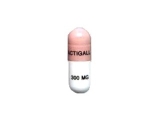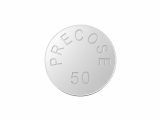Importance of micromeritics in pharmacy termsync
In the field of pharmacy, micromeritics plays a significant role in understanding and characterizing the physical properties of pharmaceutical powders and particles. Micromeritics is the science and technology of small particles, and it involves the study of their size, shape, surface area, and porosity. By analyzing these properties, pharmaceutical scientists can better understand the behavior and performance of drugs and drug formulations.
One of the key aspects of micromeritics is determining the particle size distribution. The size of particles can greatly influence several crucial factors such as dissolution rate, bioavailability, stability, and flow properties. Through techniques like laser diffraction, sedimentation, and optical microscopy, pharmaceutical scientists can accurately measure and analyze the particle size distribution of a drug. This knowledge helps in formulating drugs with optimal particle sizes, ensuring consistent drug release and desired therapeutic effects.
In addition to particle size, micromeritics also focuses on characterizing the shape of particles. Particle shape can impact various pharmaceutical processes, including powder flowability, packaging, and compaction behavior. Different particle shapes, such as spherical, elongated, or irregular, can affect the bulk density, cohesion, and flow properties of powders. By studying particle shape using techniques like image analysis and microscopy, pharmaceutical scientists can optimize the manufacturing processes and performance of drug products.
Surface area and porosity are other vital parameters analyzed in micromeritics. Surface area is crucial for drug adsorption, dissolution, and interaction with other substances. The porosity of particles influences their ability to absorb and release substances, as well as affect drug stability and storage conditions. These properties can be determined through techniques like gas adsorption or mercury intrusion porosimetry. By understanding the surface area and porosity characteristics, pharmaceutical scientists can design drug formulations with enhanced drug release, stability, and bioavailability.
In conclusion, micromeritics plays a crucial role in the field of pharmacy as it helps pharmaceutical scientists in understanding and characterizing the physical properties of drug particles. By analyzing particle size, shape, surface area, and porosity, scientists can optimize drug formulations for better drug release, stability, and performance. The knowledge gained from micromeritics enables the formulation of more effective and safe drugs, ultimately benefiting patient health and well-being.
The Importance of Micromeritics in Pharmacy Termsync
Micromeritics: A Key Pillar in Pharmaceutical Industry
Micromeritics is a crucial field that plays a pivotal role in the pharmacy industry. It involves the study and analysis of small particle characteristics, such as size, shape, surface area, and porosity. These characteristics are of paramount importance as they directly impact the performance and effectiveness of pharmaceutical products.
Ensuring Optimal Drug Delivery
Micromeritics is essential in ensuring optimal drug delivery to patients. By understanding the micrometric properties of drug particles, pharmacists can design dosage forms that maximize drug absorption and bioavailability. This allows for precise and targeted drug delivery, minimizing side effects and improving patient outcomes.
Controlling Drug Formulation Stability
Through micromeritics, pharmacists can also control drug formulation stability. Knowledge of particle size, shape, and surface area helps determine the optimal conditions for drug storage, preventing degradation or loss of potency. This is crucial in maintaining the efficacy and quality of pharmaceutical products throughout their shelf life.
Enhancing Drug Dissolution and Solubility
Micromeritics plays a significant role in enhancing drug dissolution and solubility. By manipulating particle size and surface area, pharmacists can improve the dissolution rate of poorly soluble drugs. This leads to faster and more efficient drug absorption, allowing patients to experience the therapeutic effects sooner.
Ensuring Quality Control and Regulatory Compliance
Micromeritics is vital in ensuring quality control and regulatory compliance in the pharmacy industry. Through careful analysis of particle characteristics, pharmacists can assess the uniformity of drug formulations and detect any potential issues. This helps maintain consistency in product quality, meeting the stringent requirements set by regulatory authorities.
In conclusion, micromeritics plays a crucial role in the pharmacy industry. By understanding and manipulating particle characteristics, pharmacists can optimize drug delivery, control formulation stability, enhance drug dissolution, and ensure quality control and regulatory compliance. It is a key pillar in the development and production of pharmaceutical products, ultimately benefiting patients and improving healthcare outcomes.
Understanding Micromeritics in Pharmacy
Micromeritics is a branch of pharmaceutical science that deals with the measurement and characterization of small particles and powders. It plays a crucial role in the development, production, and quality control of pharmaceutical formulations.
Particle Size Analysis:
One of the main focuses of micromeritics in pharmacy is the measurement of particle size. Particle size can greatly influence the physical and chemical properties of drugs, such as dissolution rate, bioavailability, and stability. Techniques such as laser diffraction, sedimentation, and microscopy are used to determine the particle size distribution of pharmaceutical powders.
Surface Area Determination:
Surface area is an important property that affects drug absorption and dissolution. Micromeritics helps in determining the specific surface area of pharmaceutical powders, which can indicate their reactivity and adsorption capacity. The Brunauer-Emmett-Teller (BET) method and gas adsorption techniques are commonly used for surface area analysis.
Bulk Density and Flowability:
The bulk density and flowability of powders are key factors in the formulation and manufacturing processes of pharmaceuticals. Micromeritics provides methods to measure the bulk density and assess the flow properties of powders. These measurements help in determining the compressibility, handling characteristics, and flow behavior of pharmaceutical powders.
Powder Rheology:
Rheological properties, such as viscosity and flow behavior, are important considerations in the formulation and manufacturing of pharmaceutical suspensions, emulsions, and granules. Micromeritics helps in characterizing the flow properties of pharmaceutical powders, which in turn can be used to optimize the manufacturing processes and ensure product quality.
Powder Packaging and Storage:
Micromeritics in pharmacy also plays a role in determining the appropriate packaging and storage conditions for pharmaceutical powders. The understanding of powder characteristics, such as moisture content, porosity, and compressibility, helps in selecting suitable packaging materials and storage conditions to maintain the stability and quality of pharmaceutical products.
In conclusion, micromeritics is an essential field in pharmacy that helps in understanding and controlling the particle size, surface area, bulk density, flow properties, and packaging considerations of pharmaceutical powders. It contributes to the development and production of safe, effective, and high-quality pharmaceutical formulations.
Impact of Micromeritics on Pharmaceutical Formulations
Determining Product Performance
Micromeritics plays a crucial role in the development and formulation of pharmaceutical products. By studying the physical characteristics and properties of pharmaceutical ingredients, micromeritics helps determine the overall performance of a drug formulation. Factors such as particle size, shape, surface area, and porosity greatly influence the drug's dissolution, bioavailability, stability, and processability.
Understanding these attributes allows formulation scientists to optimize drug delivery systems and ensure the desired therapeutic outcomes.
Improving Solubility and Dissolution
Particle size is one of the most critical aspects of micromeritics that affects the solubility and dissolution rates of drugs. Smaller particles possess a larger surface area, which enhances the interaction with solvents and biological fluids, leading to faster dissolution. By manipulating the particle size distribution, pharmaceutical scientists can improve the solubility and bioavailability of poorly soluble drugs, enabling more efficient drug delivery.
Micromeritics techniques like milling, micronization, and nanosizing are employed to reduce particle size and enhance drug dissolution properties.
Achieving Optimal Powder Flowability
Another area where micromeritics has a significant impact on pharmaceutical formulations is powder flowability. Powder flow properties influence the uniformity and accuracy of dosage forms, including tablets, capsules, and granules. Poor flowability can lead to inconsistent drug content in each unit, affecting drug efficacy and patient compliance.
By characterizing the particle size, shape, and surface properties using micromeritics testing methods, pharmaceutical engineers can optimize powder formulations to achieve good flowability and improve manufacturing efficiency.
Controlling Drug Release Profiles
The micromeritics of excipients used in controlled release formulations is essential in determining the drug release profiles. Various micromeritic properties, such as particle size, porosity, and surface area, influence the drug release mechanisms and kinetics. By selecting excipients with specific micromeritics characteristics, pharmaceutical formulators can achieve desired drug release profiles, including sustained release, controlled release, or immediate release.
Understanding the micromeritics of excipients allows for the development of personalized drug delivery systems tailored to meet specific therapeutic needs.
Ensuring Product Stability
Micromeritics also plays a vital role in ensuring the stability of pharmaceutical formulations. Physical characteristics such as particle size, surface area, and porosity can affect the stability and shelf life of drugs. Micromeritics testing can help identify potential issues related to drug degradation, aggregation, or polymorphism, enabling the formulation of stable products that maintain their efficacy over time.
By considering micromeritics parameters during formulation development, pharmaceutical companies can ensure the stability and quality of their products throughout their shelf life.
Conclusion
Micromeritics is a fundamental aspect of pharmaceutical formulation development. By understanding the impact of particle size, shape, surface area, and other micromeritics properties, pharmaceutical scientists can optimize drug delivery systems, improve solubility and dissolution rates, achieve optimal powder flowability, control drug release profiles, and ensure product stability. The application of micromeritics greatly contributes to the overall efficacy and quality of pharmaceutical formulations, ultimately benefiting patients.
Applications of Micromeritics in Drug Delivery Systems
1. Particle size analysis
One of the primary applications of micromeritics in drug delivery systems is particle size analysis. Micromeritics techniques, such as laser diffraction and microscopy, are used to determine the size distribution of drug particles in formulations. This information is crucial in formulating drugs, as particle size can affect drug dissolution, absorption, and bioavailability.
2. Surface area measurement
Micromeritics plays a vital role in drug delivery systems by measuring the surface area of drug particles. Surface area analysis helps determine the drug's dissolution rate, stability, and release characteristics. Techniques like the Brunauer-Emmett-Teller (BET) method are commonly used to measure the specific surface area of pharmaceutical powders efficiently.
3. Porosity characterization
Understanding the porosity of drug particles is essential in drug delivery systems. Micromeritics allows for the characterization of porosity, including total pore volume, pore size distribution, and pore connectivity. This information helps in the design and optimization of drug formulations, as porosity influences drug release kinetics and permeability.
4. Density determination
Determining the density of drug particles is crucial in drug delivery systems. Micromeritics techniques like gas pycnometry and helium displacement are used to measure the density of pharmaceutical powders accurately. Density data aids in dosage form development, as it affects the dose uniformity, filling capacity, and compressibility of drug formulations.
5. Flowability and compressibility analysis
Micromeritics techniques are also employed to assess the flowability and compressibility of drug powders. Analysis of flow properties, such as angle of repose and Hausner ratio, helps determine the powder's ability to flow and pack uniformly. These parameters are critical in the manufacturing of drug dosage forms, as they affect the content uniformity and tabletting process.
6. Formulation optimization
Micromeritics data plays a crucial role in the formulation optimization of drug delivery systems. By understanding the particle size distribution, surface area, porosity, density, and flowability of drug particles, scientists and formulators can optimize formulations to achieve desired drug release profiles, enhance stability, and improve patient compliance.
In conclusion, micromeritics provides valuable insights into various aspects of drug delivery systems. From particle size analysis to formulation optimization, micromeritics techniques aid in developing effective and efficient drug products.
Role of Micromeritics in Quality Control of Medications
Micromeritics plays a crucial role in the quality control of medications by providing valuable insights into the physical and chemical properties of pharmaceutical formulations.
Particle Size Distribution
One of the key aspects of micromeritics is the analysis of particle size distribution, which is essential for assessing the quality and performance of medications. By measuring the particle size range, distribution, and shape, pharmaceutical scientists can determine the effectiveness of drug delivery systems and ensure consistent drug release rates.
Further, particle size distribution analysis provides valuable information about the stability, dissolution, and bioavailability of medications. It helps in identifying any potential issues such as aggregation or agglomeration that may affect the drug's efficacy or safety.
Surface Area and Porosity
Micromeritics also plays a significant role in evaluating the surface area and porosity of pharmaceutical formulations. The specific surface area of a drug particle is crucial as it directly affects its dissolution rate and solubility. Micromeritic techniques allow pharmaceutical scientists to determine the surface area of drug particles, ensuring that they meet the required specifications for optimal therapeutic outcomes.
Porosity analysis helps in assessing the drug's ability to bind to excipients, control drug release, and prevent drug degradation. By understanding the pore structure and size distribution, micromeritics enables formulation scientists to optimize the drug's stability, bioavailability, and therapeutic effect.
Bulk Density and Flowability
Micromeritics also plays a role in evaluating the bulk density and flowability of medications. The bulk density of a pharmaceutical powder or granule affects its packing and compression properties. It determines the dosage form's weight, volume, and ability to be easily dispensed or manufactured.
In addition, micromeritics provides insights into the flowability of pharmaceutical powders, which is crucial for solid dosage forms. By measuring parameters such as angle of repose, bulk density, and flow rate, micromeritics helps in identifying any potential issues such as poor flow, segregation, or bridging that may impact the manufacturing process or the content uniformity of the final product.
In conclusion, micromeritics plays a vital role in the quality control of medications by providing valuable information about particle size distribution, surface area, porosity, bulk density, and flowability. These parameters allow pharmaceutical scientists to ensure the consistency, stability, and efficacy of medications, ultimately improving patient safety and therapeutic outcomes.
Advancements in Micromeritics Technology and its Implications in Pharmacy
Micromeritics technology has undergone significant advancements in recent years, revolutionizing the field of pharmacy. Through the use of advanced instrumentation and techniques, scientists are now able to analyze and characterize the physical properties of pharmaceutical powders and particles with greater precision and accuracy than ever before.
Enhanced Particle Size Analysis
One of the key advancements in micromeritics technology is the development of enhanced particle size analysis methods. Traditional techniques, such as sieving or microscopy, often lacked the necessary sensitivity and resolution to effectively measure particle size distributions for pharmaceutical applications. However, modern techniques, such as laser diffraction or dynamic light scattering, allow for highly accurate measurements of particle size and shape, enabling researchers to optimize drug formulation and manufacturing processes.
Better Understanding of Surface Area and Porosity
The characterization of surface area and porosity is critical in pharmaceutical applications, as these properties can significantly impact drug dissolution rates and bioavailability. Advances in micromeritics have led to the development of techniques, such as gas adsorption analysis, that provide detailed information about the specific surface area, pore volume, and pore size distribution of pharmaceutical powders. This information helps researchers in designing drug delivery systems that maximize drug absorption and release.
Improved Powder Flow and Dispersion
Poor powder flow and dispersion can lead to issues in drug manufacturing and administration, such as inconsistent drug content in tablets or inadequate aerosolization in inhalation therapies. Micromeritics technology has played a crucial role in understanding and improving these issues. Through techniques like angle of repose measurement or flowability analysis, scientists can assess the flow properties of powders and optimize formulation parameters to ensure consistent drug product performance.
In conclusion, advancements in micromeritics technology have paved the way for more efficient and effective pharmaceutical development and manufacturing processes. The ability to accurately analyze particle size, surface area, and powder flow properties allows scientists to design and optimize drug formulations for enhanced therapeutic outcomes. This ultimately benefits patients by ensuring the quality, efficacy, and safety of pharmaceutical products.
Future Prospects of Micromeritics in the Pharmacy Industry
1. Enhanced Quality Control and Formulation Development
Micromeritics, as a field of study in pharmacy, holds great promise for the future of quality control and formulation development in the industry. By understanding the particle size and distribution of pharmaceutical materials, scientists can better assess the performance and stability of various drug formulations. This knowledge can help improve the overall quality and effectiveness of pharmaceutical products, leading to better patient outcomes.
2. Advancements in Drug Delivery Systems
Micromeritics plays a crucial role in the development of novel drug delivery systems. By controlling the particle size and morphology of drug particles, scientists can design more efficient delivery systems that enhance drug dissolution, bioavailability, and targeted delivery to specific sites within the body. These advancements have the potential to revolutionize drug therapies and improve patient compliance by providing more effective and convenient dosage forms.
3. Tailored Drug Design
With the help of micromeritics, researchers can gain insights into the relationship between particle properties and drug performance. This knowledge can be utilized to tailor drug design and develop personalized medicines that meet the specific needs of individual patients. By optimizing particle size, surface area, and porosity, pharmaceutical scientists can improve the therapeutic efficacy and minimize the side effects of drugs.
4. Nanotechnology and Micromeritics
Nanotechnology, with its focus on manipulating matter at the nanoscale, holds immense potential in the field of micromeritics. The combination of nanotechnology and micromeritics can pave the way for the development of innovative drug delivery systems, such as nanocarriers, nanoparticles, and nanoemulsions. These nanoscale formulations can improve drug solubility, enhance targeted delivery, and facilitate the controlled release of drugs, opening up new possibilities in the treatment of various diseases.
5. Regulatory Compliance and Safety
Micromeritics is crucial for ensuring regulatory compliance and safety standards in the pharmaceutical industry. By accurately measuring the particle size and distribution of drug substances and excipients, manufacturers can meet the quality control requirements set by regulatory authorities. This ensures the consistency and uniformity of pharmaceutical products, minimizing the risk of variability in drug performance and safety.
In conclusion, micromeritics holds great promise for the future of the pharmacy industry. Its applications in quality control, formulation development, drug delivery systems, tailored drug design, nanotechnology, and regulatory compliance are key factors in advancing pharmaceutical research, improving drug therapies, and ultimately benefiting patients worldwide.
Follow us on Twitter @Pharmaceuticals #Pharmacy
Subscribe on YouTube @PharmaceuticalsYouTube





Be the first to comment on "Importance of micromeritics in pharmacy termsync"